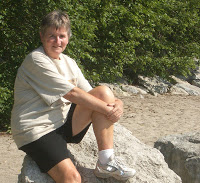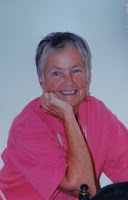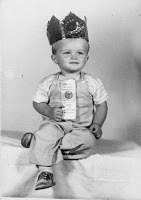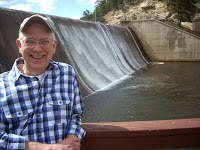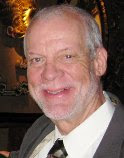pleasant afternoon, after I’d finished classes, I walked across campus to do
some work in the library. On the third floor I found the book I needed and was
about to sit down at a table when things began to rumble. It was Oct. 17, 1989
and San Francisco was about to get a shaking like it hadn’t felt in decades.
Floors and walls trembled in the familiar motion of a California earthquake.
Fixtures rattled a little and swayed. Then the real shaking began. Ceiling
lights knocked around and flickered and then went out. Books were flung off
their shelves. Filing cabinets toppled over. People dove under tables and I
quickly placed my brief case over my head to protect against falling debris. I
had been through many earthquakes in San Francisco—felt the building sway,
heard the rattling, been waken up in a rippling bed, felt the floor jumping
around beneath my feet—but this time, for the first time, I was afraid. “God, I
could die here,” I thought.
stopped. Fifteen seconds that felt like 15 years. The lights were out but being
5 o’clock in the afternoon, there was enough light for us to thread our dazed
way down three flights of stairs and out of the building. There was no panic as
hundreds of students climbed over piles of books and papers and dust to leave.
Outside, people milled about the campus. I was in probably the worst building
in the worst spot for an earthquake. The San Francisco State University campus
sits almost exactly atop the San Andreas fault and the soil is mostly sand
which tends to magnify the waves of an earthquake. The building I was in was
built of concrete slabs, the kind that respond to shock waves by simply
collapsing. It’s called “pancaking” in which the floors just slide down onto
each other, crushing anything in between. I was glad to be outside.
power in the city was out, no traffic lights worked, cars just stopped on the
street, dazed drivers wondering what to do next. No streetcars could run
either. The city just stopped.
reaction to a major earthquake is confusion. Buildings and the ground they’re
built on aren’t supposed to move like that. Disorientation is the first shock.
in the southwest corner of the city and with traffic totally snarled and no
public transit operating, I figured I might as well start walking home which
was close to the city center, probably 4-5 miles away. I started walking, heading
toward clouds of billowing black smoke. I hoped it wasn’t our house burning
down.
were crowded with walkers and some people had transistor radios to get some
news. Remember, this was way before Internet, Facebook, cell phones. No such
thing as instant communication.
in front of her house and announced to passersby that “That quake ran right in
front of my house.” Had the tremor run right in front in your house, I thought,
you wouldn’t be standing here now. The actual shift in tectonic plates was
probably miles deep in the earth.
the Bay Bridge collapsed—a part of it, in fact, had. A freeway in Oakland had
collapsed, killing 60 people. The Marina District, built on landfill by the
bay, took the worst damage and was burning. All highways, bridges and trains
were unusable. If you couldn’t walk to where you needed to be, people were told
to just stay where they were. I kept walking, stepping around the occasional
pile of bricks and stucco that had fallen off buildings.
home. Everything was OK. We lived on a hill overlooking Golden Gate Park, the
most solid geology you could find in San Francisco (the hill, not the park
which is sand). Walls cracked and books had wobbled to the edges of shelves,
but nothing toppled or collapsed.
soon after I did. He’d been in a highrise office building downtown and had to
walk down ten flights of stairs but managed to drive home taking a circuitous
route through neighborhoods to avoid traffic jams. Some of the office towers
had actually banged against one another at the height of the shaking—or so we
heard.
we arrived home, two friends showed up. They both worked in SF but lived in
Oakland and couldn’t get home so they hiked to our place and stayed with us.
There was no power in the house, so we built a fire outside in a little hibachi
grill and heated up some leftovers. The city was dark except for the glow to
the northeast where the Marina District kept burning. We felt oddly safe on our
bedrock hillside.
actually perform one rescue that dangerous night. The woman who lived in the
flat below ours was stranded in East Bay which meant her cat Darwin needed
feeding. He sat mewling at our back door until we invited him in and gave him
some food. Next day Darwin repaid the favor by leaving us a dead bird on our
doorstep.
that followed, the city slowly got back to a new normal. Mail delivery was
cancelled for three days and many shops remained closed. The World Series
between SF and Oakland resumed. Buildings and freeways were inspected and some
condemned. BART resumed running trains the next day but the Bay Bridge was to
stay closed for at least a month until the collapsed section could be repaired.
Ferry boats started running across the bay—actually a nicer way to commute. We walked
through the Marina District over the rippled pavement and past the leaning or
burnt out flats. Everywhere you went you calculated how safe it was or wasn’t
until you realized there was no place safe but you went on anyway. Living on
the faultline.
19 April 2015
Cleveland, then grew up in San Francisco, and is now growing up in Denver. He
retired from work with non-profits in 2009 and now bicycles, gardens, cooks,
does yoga, writes stories, and loves to go out for coffee.

